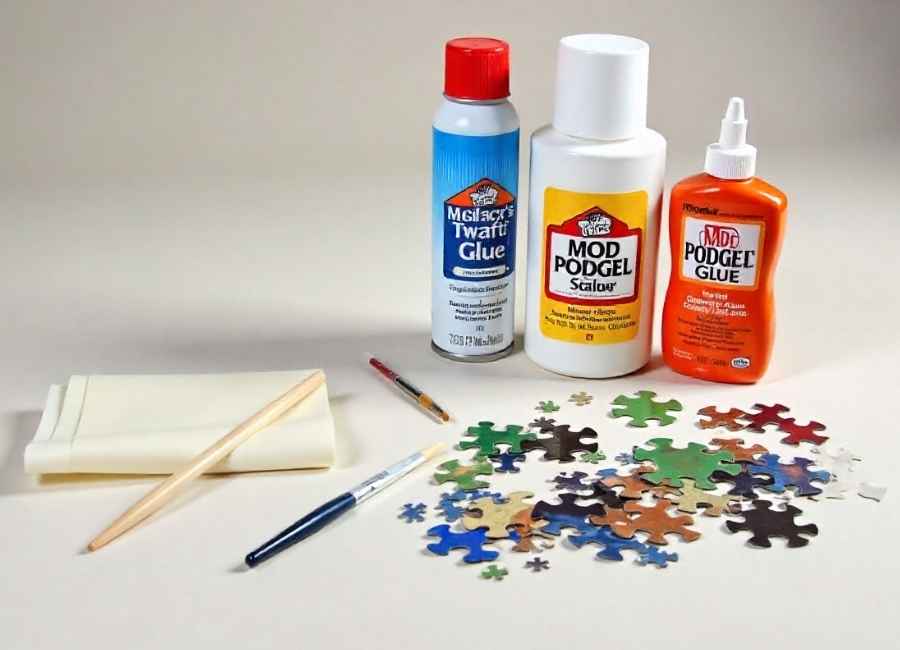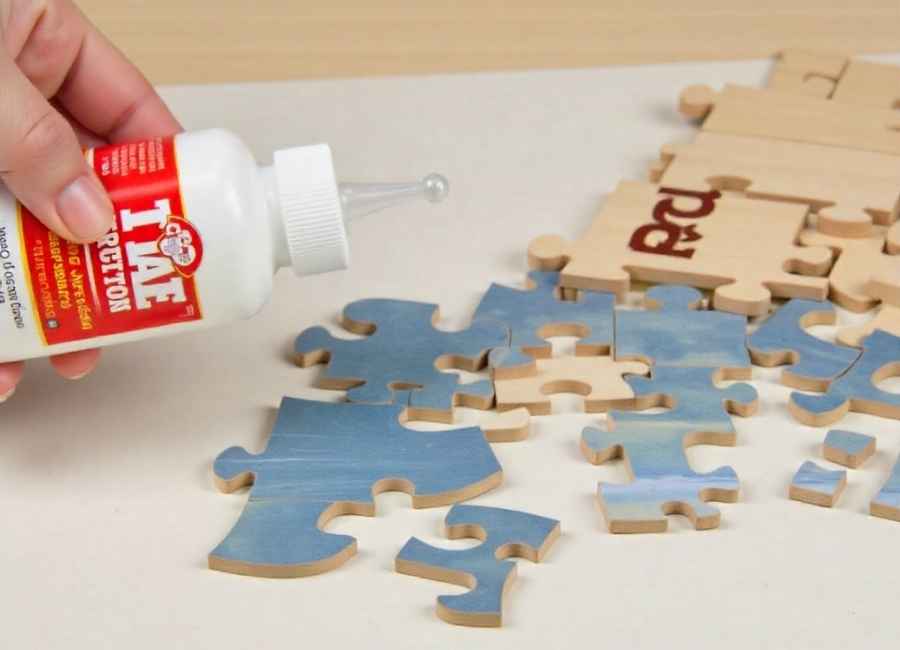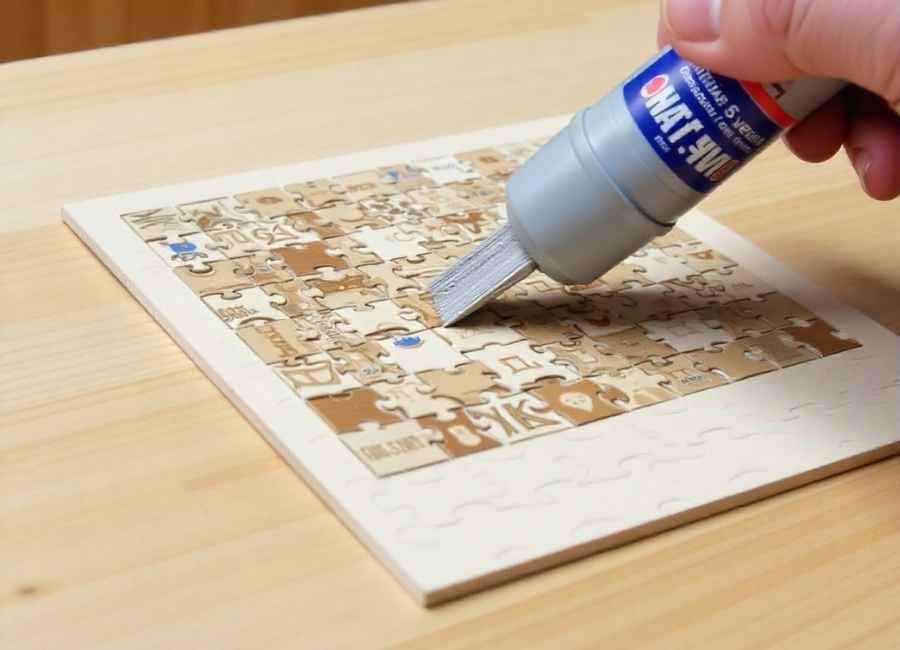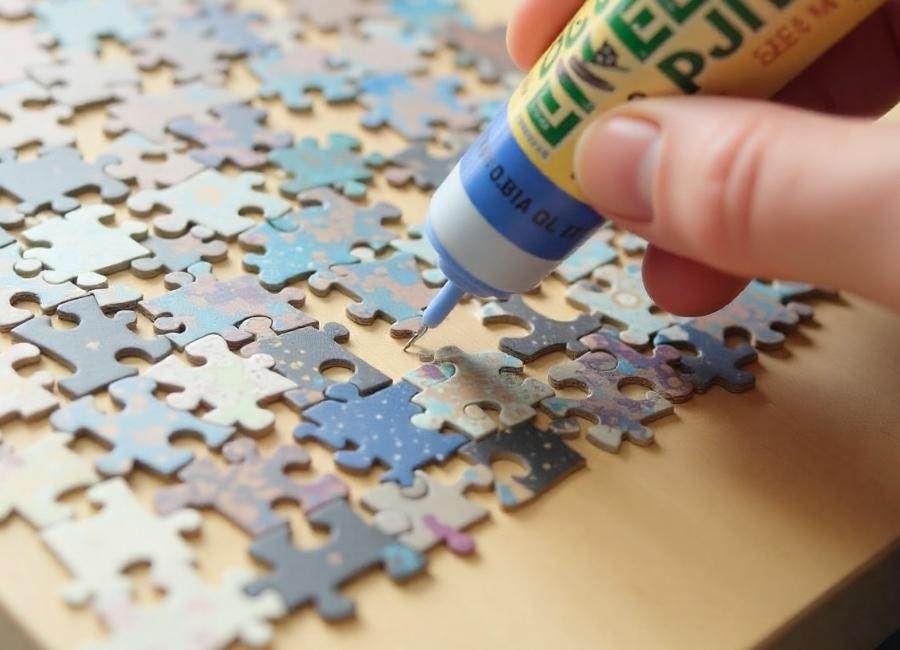Has anyone ever asked you to make a custom jigsaw puzzle from a favorite photo? It’s a great gift and a fun DIY project. A friend recently asked me to make one, and I’m excited to try! I’ll use multi-ply plywood, probably 1/4″ thick, as the base. Like with any craft, there’s always something to figure out. For me, the main question was: What glue should I use to attach the image to the plywood?
In this post, I’ll walk you through how I chose the right glue, the pros and cons of each option, and why picking the right adhesive matters for making a jigsaw puzzle.
The Importance of Choosing the Right Glue
When you make a jigsaw puzzle from a favorite photo, the glue is key to making sure the image sticks well to the plywood and doesn’t get damaged. Since the picture is the main focus, you want it to last. The glue should be strong enough to hold the pieces together as you cut them, but not so strong that it makes cutting hard or leaves an uneven finish.
So, what type of Glue works best for this type of project?
Types of Glue for Puzzle Making

1. Mod Podge (Matte or Glossy)
Mod Podge is a favorite for crafts with images. It acts as glue, sealer, and finish all in one, so it’s a simple pick for making jigsaw puzzles. (Can you use Mod Podge on jigsaw puzzles?, n.d.) Here’s why Mod Podge is a good option:
- Versatility: Mod Podge comes in different finishes (matte, glossy, etc.) depending on the look you want for your puzzle. It’s also great for sealing the image and providing a protective layer after the puzzle is cut.
- Ease of Use: It’s easy to apply and doesn’t require any specialized tools. Spread it on the plywood, place the image, and let it dry.
- Drying Time: Mod Podge dries relatively quickly, which means you don’t have to wait too long to continue with the project.
- Pro Tip: Make sure to apply it evenly to avoid any air bubbles under the image. Once it’s dried, you can lightly sand the edges for a smooth finish.
2. Spray Adhesive
Another great option is spray adhesive, which is perfect for projects that require an even coat of Glue. Its espSpray adhesive is another good choice, especially if you want an even layer of glue. It helps prevent wrinkles or uneven spots. Here are some benefits of using spray adhesive:
- Fast Drying: Spray adhesives generally dry very quickly, meaning you won’t have to wait long before proceeding to the next step. (Selsil Multi-Purpose Spray Adhesive, n.d.)
- Good Bonding: It provides a strong bond without adding any extra weight or thickness, which can be important for keeping the jigsaw puzzle light and easy to assemble. (The 5 Best Glues for Puzzles in 2023 (October), 2023)
- Pro Tip: Make sure to spray in light, even coats to prevent the Glue from getting too thick. Hold the can about 8-12 inches away from the surface.
3. PVA Glue (White Glue)

PVA glue is also a great option for crafts, especially if you want something budget-friendly and easy to find. It’s a white glue that dries clear and holds well. Here’s why it works for jigsaw puzzles:
- Strong Hold: PVA glue offers a solid bond and is less likely to peel or lift over time. (Can You Use PVA Glue to Glue a Puzzle?, n.d.)
- Affordable: It’s inexpensive and commonly found at craft stores, so it’s an accessible option. (How To Glue Jigsaw Puzzle Like a Pro, n.d.)
- Drying Time: It does take a little longer to dry compared to spray adhesives or Mod Podge, so you’ll need to be patient.
- Pro Tip: You may want to apply a thin layer to the plywood to avoid the Glue seeping through the image and causing any bubbling or distortion.
4. Wood Glue
If you want to make sure the image sticks firmly to the plywood, wood glue is a solid choice. It’s made for bonding wood and works well. Just keep a few things in mind:
- Strong Bond: Wood glue provides a strong and permanent bond between the plywood and the image.
- Longer Drying Time: Be aware that wood glue usually has a longer drying time, so you’ll need to allow extra time for the Glue to set fully.
- Potential for Warping: Wood glue, when applied too thickly, could cause the plywood to warp, so be sure to use it sparingly. (Plywood Warping Woes? Discover the Kind of Plywood Least Likely to Warp and Why Plywood Thickness Matters, n.d.)
Tips for Applying Glue

No matter which Glue you decide to use, here are some tips for getting the best results:
- Prep the Plywood: Make sure the plywood is clean and free of any dust or debris before you start gluing.
- Apply Glue Evenly: Use a brush, roller, or even your hands (if you don’t mind getting a little messy) to spread the Glue evenly across the plywood.
- Avoid Over-application: You don’t want to soak the image in Glue, as it can cause wrinkles or seepage.
- Press Down Firmly: Once the image is positioned, press it down gently to ensure a smooth, even bond.
- Let it Dry Completely: Make sure the Glue is completely dry before cutting the puzzle. If it’s even slightly damp, it could affect the cutting process or cause the pieces to tear.
Final Thoughts
Turning a favorite photo into a jigsaw puzzle is a fun way to make something special and hands-on. Mod Podge, spray adhesive, PVA glue, and wood glue all have their own strengths and will work if you use them correctly. For my project, I’m leaning toward Mod Podge because it’s easy to use and gives a nice finish.
If you’re planning to make a custom jigsaw puzzle too, remember to choose a glue that suits your needs. If you want to make your own custom jigsaw puzzle, pick the glue that works best for you and take your time applying it. You’ll end up with a unique puzzle your friend or loved one can enjoy for years. Let me know in the comments below!











